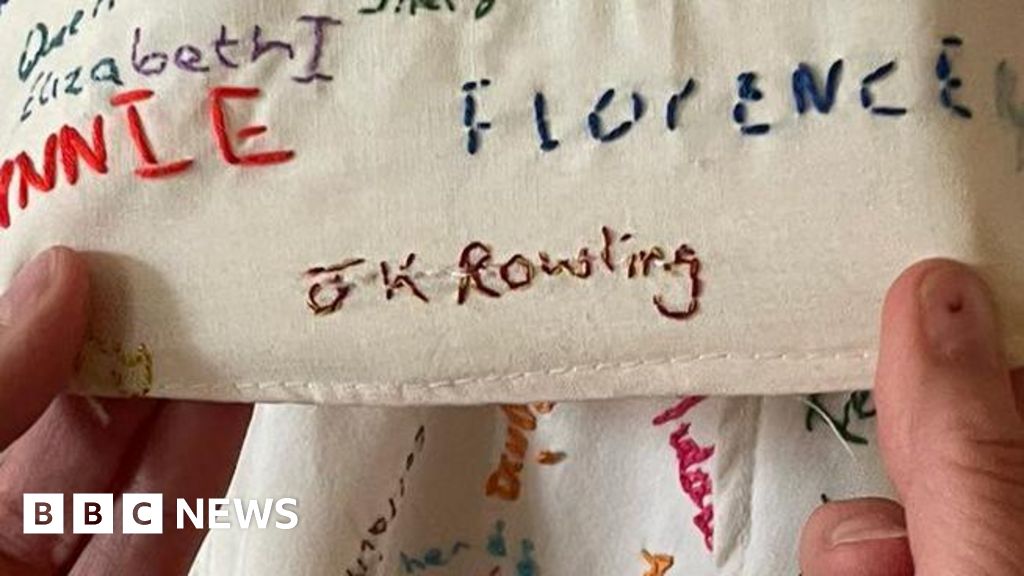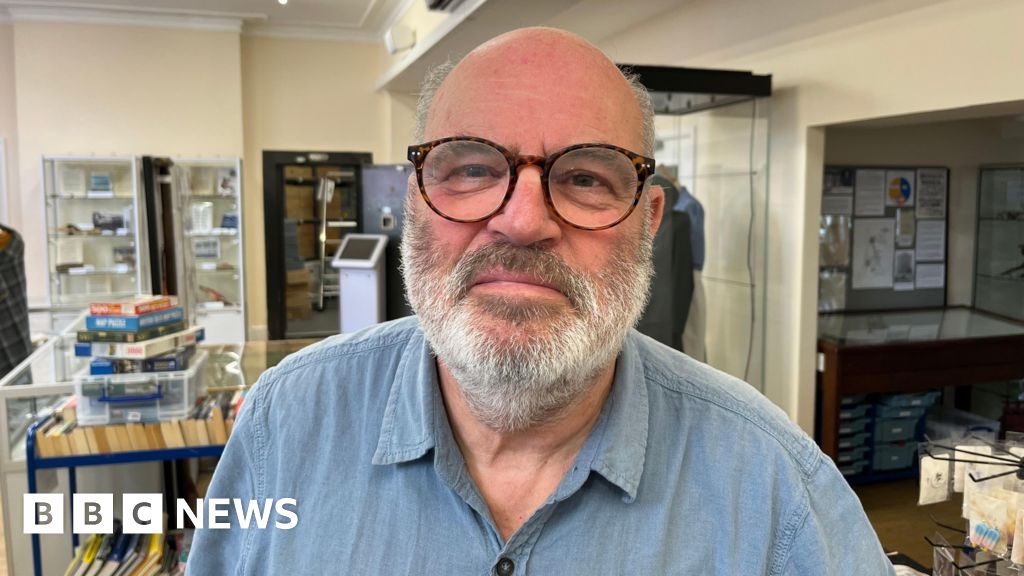- Baseball
Macron and Merz: Europe must arm itself in an unstable world
时间:2010-12-5 17:23:32 作者:Global 来源:Football 查看: 评论:0内容摘要:“Seeing his painting on view in `Somewhere to Roost’ is yet another signal that his work made it through,” she said. “I feel pride, vindication and joy, and I only wish I had him at the museum next to me so that I could watch his reaction to seeing it.”“Seeing his painting on view in `Somewhere to Roost’ is yet another signal that his work made it through,” she said. “I feel pride, vindication and joy, and I only wish I had him at the museum next to me so that I could watch his reaction to seeing it.”
’s aid distribution has been marred by chaos in its first week of operations, andon crowds near its delivery sites. Before Sunday, at least six people had been killed and more than 50 wounded, according to local health officials.

The foundation says the private security contractors guarding its sites have not fired on the crowds. Israel’s military has acknowledged firing warning shots on previous occasions.The foundation said in a statement it distributed 16 truckloads of aid early Sunday “without incident,” and dismissed what it described as “false reporting about deaths, mass injuries and chaos.”Thousands of people headed toward the distribution site in southern Gaza hours before dawn. As they approached, Israeli forces ordered them to disperse and come back later, witnesses said. When the crowds reached the Flag Roundabout, around 1 kilometer (half a mile) away, at around 3 a.m., Israeli forces opened fire, the witnesses said.

“There was fire from all directions, from naval warships, from tanks and drones,” said Amr Abu Teiba, who was in the crowd.He said he saw at least 10 bodies with gunshot wounds and several other wounded people, including women. People used carts to ferry the dead and wounded to a field hospital. “The scene was horrible,” he said.

Most people were shot “in the upper part of their bodies, including the head, neck and chest,” said Dr. Marwan al-Hams, a health ministry official at Nasser Hospital, where many of the wounded were transferred after being brought to the field hospital run by the Red Cross.
He said 24 people were being treated in Nasser Hospital’s intensive care unit. A colleague, surgeon Khaled al-Ser, later said 150 wounded people had arrived, along with 28 bodies.Joseph hires midwives who can relate to patients. One gave birth to the first of her six children at 16 years old with the help of a midwife. Another was born to a teen mom, grew up without much money and joined the organization to help people who often don’t get access to midwifery care.
On a recent afternoon, Kayleigh Sturrup arrived for a clinic checkup a few weeks before giving birth to her first child. During the pregnancy, she had uterine fibroids, ligament pain and shortness of breath. She said the midwives gave her “a layer of support.”Experts say health care providers are more likely to spot potential problems when they listen closely to patients and take what they say seriously.
Before examining Sturrup, midwife Celena Brown asked: “How we feeling?”Midwife Celena Brown speaks with Kayleigh Sturrup during a pregnancy checkup. Midwives at Commonsense Childbirth are striving to provide good, accessible care. (AP Photo/Laura Ungar)
- 最近更新
- 2025-07-07 04:07:44TT visitor trade offers 'crucial' boost to firms
- 2025-07-07 04:07:44More than 100 killed in heavy Nigeria flooding, rescue efforts ongoing
- 2025-07-07 04:07:44Macron threatens sanctions on Israelis over ‘untenable’ Gaza aid crisis
- 2025-07-07 04:07:44Frugal tech: The start-ups working on cheap innovation
- 2025-07-07 04:07:44Ex-DRC President Kabila holds talks in M23-held city of Goma: Reports
- 2025-07-07 04:07:44Chaos erupts as Palestinians rush to aid site after months of blockade
- 2025-07-07 04:07:44‘We lost everything’: 151 dead in Nigeria floods, thousands displaced
- 2025-07-07 04:07:44Man extradited from Dubai charged with murder
- 热门排行
- 2025-07-07 04:07:44I Made Matthew McConaughey's Hot Pants Margarita, and Now I'm Ready for Summer
- 2025-07-07 04:07:44Death at the cross: Secret burials, ‘cult-like’ practices at Kenyan church
- 2025-07-07 04:07:44Joanna Gaines’s Apple Baked Beans
- 2025-07-07 04:07:44US government investigates attempt to impersonate Trump’s chief of staff
- 2025-07-07 04:07:44BAIMEI IcyMe Gua Sha & Jade Roller
- 2025-07-07 04:07:44Federal appeals court temporarily reinstates Trump tariffs
- 2025-07-07 04:07:44U.S. Bureau of Labor Statistics CPI Inflation Calculator
- 2025-07-07 04:07:44Why we need 'revolutionary' cooling tech
- 友情链接
- Trump: no ‘regime change’ in Iran, urges calm after strikes Jeff Bezos’s wedding draws storm of protest in Venice Trump: no ‘regime change’ in Iran, urges calm after strikes Oil prices pare losses as ceasefire threatened Palestine Action supporters protest against UK ban OpenAI and Jony Ive accused of trying to ‘bury’ rival start-up Georgian opposition figure Giorgi Vashadze jailed in widening crackdown Lessons from my 30-year war on acne Trump shares texts from NATO chief praising ‘decisive action’ on Iran Qatar PM: Iran strike inflicted ‘scar’ on relations Dnipro church hit by Russian missile mid-service Trump’s fragile peace in the Middle East Trump signals sanctions relief for China to buy Iran’s oil Why global imbalances do matter US Congress plots big tax cut for private credit investors UK to ban Palestine Action, police clash with group’s supporters in London Israel, Iran in shaky ceasefire as Trump lashes out at both US judge allows company to train AI using copyrighted literary materials Russia-Ukraine war: List of key events, day 1,216 Rishabh Pant, KL Rahul centuries set up epic England run chase on day five The struggle to get inside how AI models really work Lessons from my 30-year war on acne Greece probes Azerbaijani arrested for espionage for links to Iran Macron and Merz: Europe must arm itself in an unstable world Jeff Bezos’s wedding draws storm of protest in Venice Trump signals sanctions relief for China to buy Iran’s oil Stablecoins ‘perform poorly’ as money, central banks warn Europe should not go it alone on defence Jeff Bezos’s wedding draws storm of protest in Venice US sanctions alleged leader of Venezuelan gang Tren de Aragua
